Modern laptops, while sleek and powerful, often come with a significant drawback: a limited number of ports. This can quickly turn into a frustrating bottleneck when you need to connect multiple peripherals, external displays, or even charge your device. The solution lies in a high-quality USB-C hub, a versatile accessory designed to expand your connectivity and streamline your workflow. This guide will help you navigate the options, ensuring you choose the perfect USB-C hub to meet your specific needs, whether for professional use, gaming, or everyday tasks. By understanding the critical factors and features, you can make an informed decision that enhances your productivity and connectivity.
We'll break down the essential considerations for selecting a USB-C hub, from the types of ports you need to the power delivery capabilities and data transfer speeds that truly matter. You'll learn how to identify a durable and compatible hub that offers long-term value, avoiding common pitfalls like slow charging or unreliable connections. Get ready to transform your single USB-C port into a powerful command center, connecting all your devices seamlessly and efficiently.
Choosing the Right Connectivity Solution
Selecting an effective USB-C hub requires evaluating several key factors that directly impact its functionality and your overall user experience. These considerations ensure the device not only meets your current needs but also provides reliable performance for the long term. Understanding these elements is crucial for making an informed purchasing decision.
Port Configuration
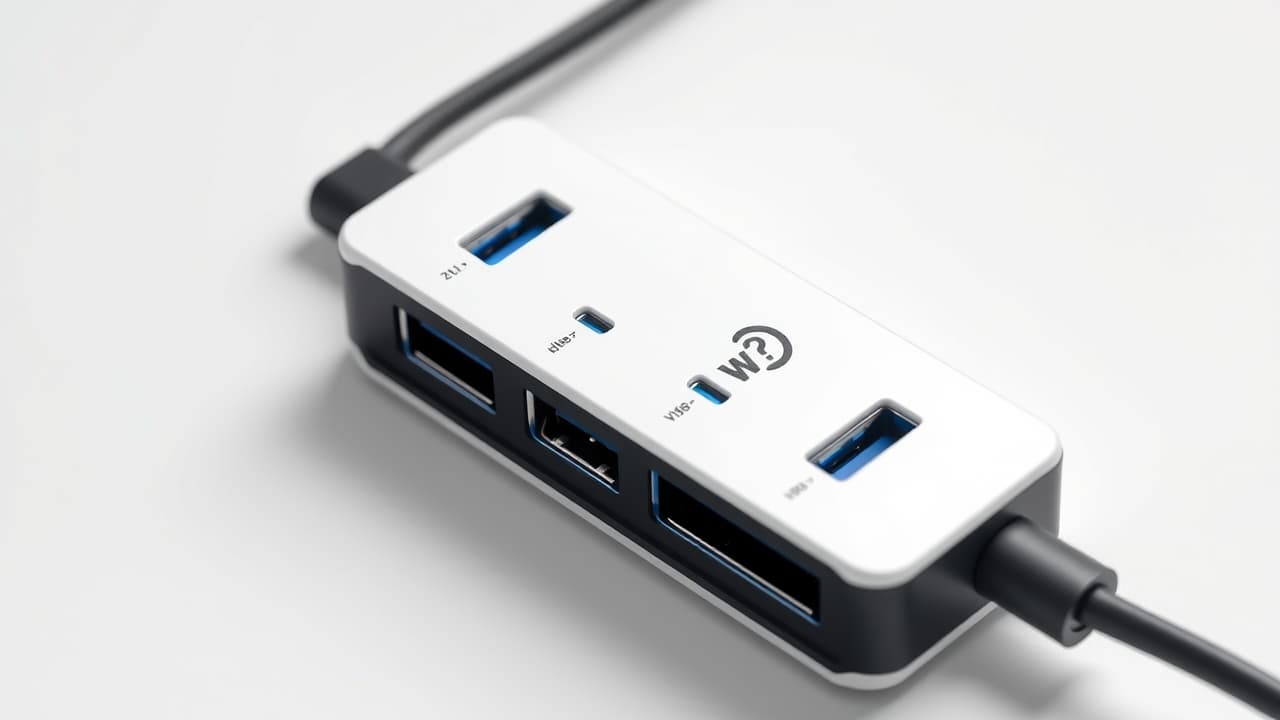
The number and types of ports on a USB-C hub are arguably the most critical factors, as they directly determine how many peripherals you can connect and whether the hub supports your specific devices. Modern laptops often lack common ports like USB-A, HDMI, or Ethernet, making a hub essential for expanded connectivity and a streamlined workspace.
Consider your current and future needs: Do you need to connect external hard drives, a mouse, a keyboard, an SD card, or an Ethernet cable? A hub with 10 or more ports, including HDMI, Ethernet, SD/microSD card slots, and multiple USB-A and USB-C data/PD ports, caters to complex professional needs and multi-device setups. For basic expansion, at least four essential ports (USB-C host, USB-A, HDMI, SD card slot) are sufficient for everyday use.
Beware of limitations: Too many ports on simple hubs can sometimes divide energy, potentially affecting signal intensity and stability. Closely spaced ports can also make it difficult to use adjacent ports simultaneously, especially with larger USB devices, leading to frustration when trying to connect everything.
Tradeoffs: While more ports offer greater versatility, they can increase the hub's size and cost. Some hubs prioritize popular ports like USB-A, while others include niche outputs like Ethernet, requiring you to assess your specific usage scenario to avoid overpaying for unused connections.
Data Transfer Speed
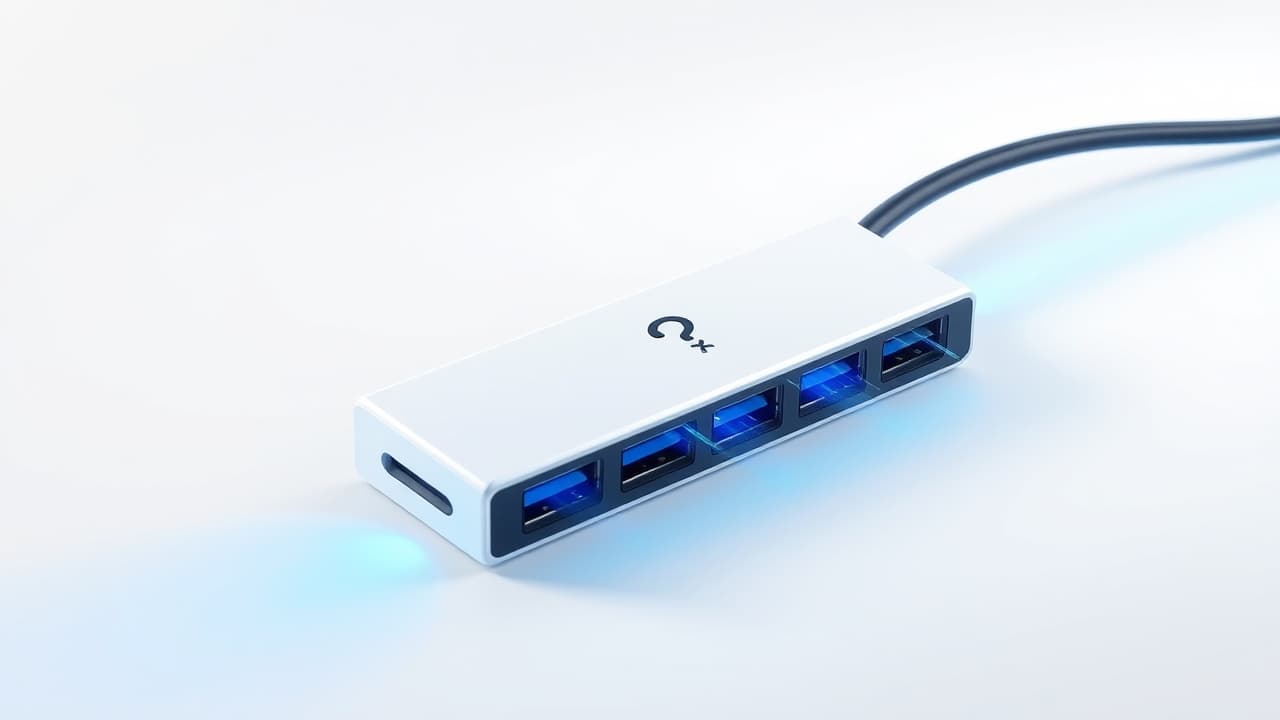
The speed at which data moves through your USB-C hub's ports is crucial, especially for tasks involving large files or high-performance peripherals. Slow data transfer speeds can create frustrating bottlenecks, impacting productivity for creative professionals, gamers, and IT professionals. This factor is measured in Gigabits per second (Gbps).
High-speed options: For demanding tasks, external GPUs, or high-speed storage, look for Thunderbolt 4/5 (40-80 Gbps) or USB4 (40 Gbps). These offer the highest performance. USB 3.1 Gen 2 / USB 3.2 Gen 2 (10 Gbps) provides excellent performance for most high-speed peripherals and is significantly faster than older USB standards.
Avoid bottlenecks: Be aware that the entire data transfer chain conforms to its slowest part. Even a high-speed hub can be bottlenecked by a slow cable or an older device. USB 2.0 (480 Mbps) will severely limit modern devices, causing slow transfers and frustration. Bus saturation can also occur when many devices are connected, degrading performance.
Tradeoffs: Higher data transfer speeds typically come with a higher price point for the hub. Evaluate whether your peripherals and tasks genuinely require top-tier speeds or if a more modest, cost-effective option will suffice.
Video Output
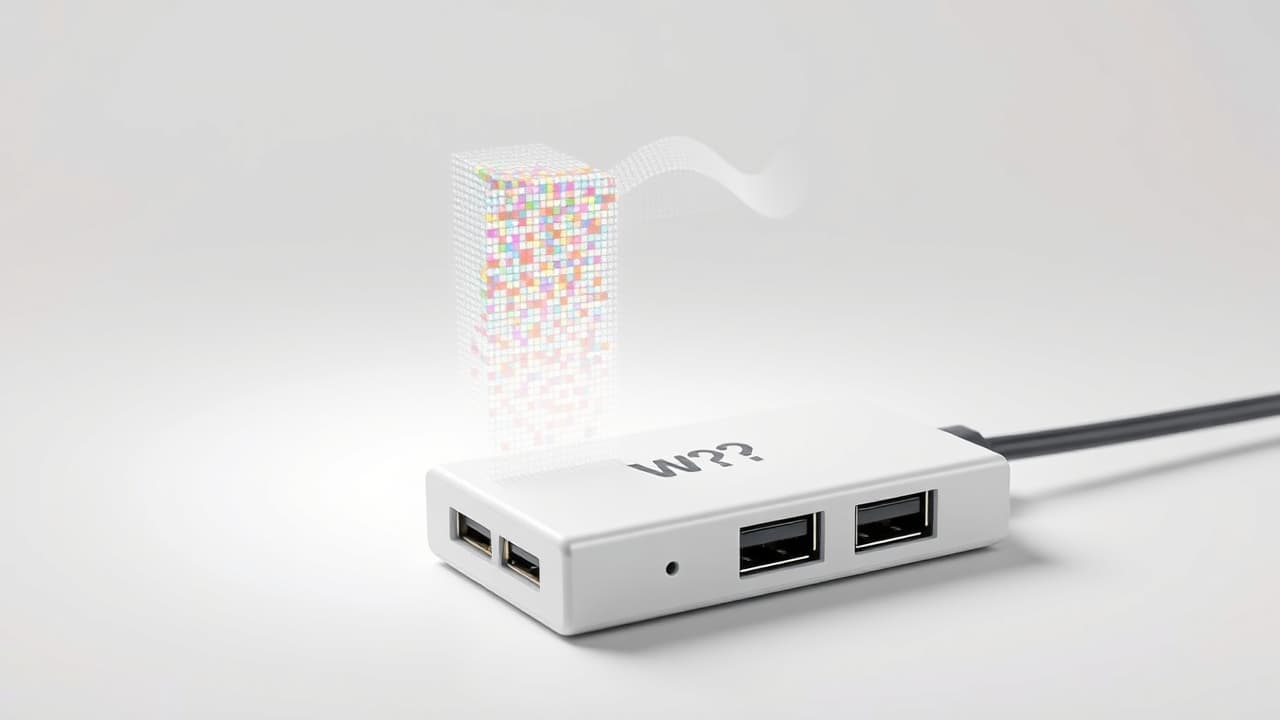
For professionals, gamers, or anyone needing more screen real estate, a USB-C hub's video output capabilities are paramount. This involves the supported resolutions, refresh rates, and the number of external displays it can connect. It directly impacts productivity, visual quality, and overall user experience.
Resolution and refresh rate: For demanding tasks, high frame-rate gaming, or future-proof setups, look for hubs supporting dual 4K@60Hz or single 8K@60Hz/4K@120Hz. A single 4K@60Hz output is a good standard for clear display output for most users. Avoid hubs limited to 4K@30Hz or lower, as this can lead to a less smooth visual experience, especially with dynamic content.
Multi-monitor support: Some advanced hubs and docking stations can support multiple external displays. Be aware of compatibility issues; for example, some hubs only support mirrored displays on Macs, not extended desktops, which limits multitasking productivity. Ensure the hub supports DisplayPort Alt Mode if you require video output.
Tradeoffs: Higher resolution and refresh rate support, especially for multiple displays, often comes with a higher price. It may also require specific technologies like Thunderbolt or DisplayLink, the latter of which needs software drivers and isn't ideal for high frame-rate gaming or high-bitrate video.
Power Delivery
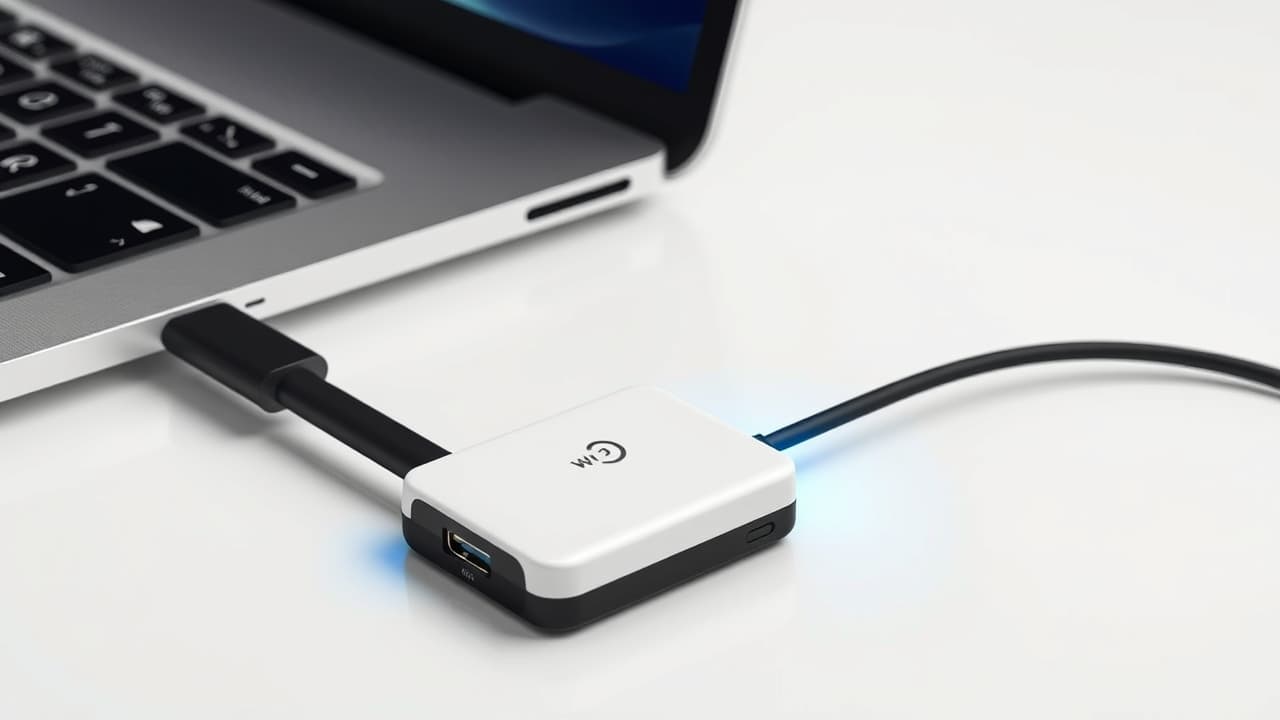
Power Delivery (PD) is the USB-C hub's ability to charge your host device (laptop) and power connected peripherals through a single USB-C port. This is essential for modern laptops that charge via USB-C, allowing you to maintain power during intensive use and reduce cable clutter. It's measured in wattage (W) and is a critical feature for any versatile hub.
Wattage requirements: For high-power laptops, such as 16-inch MacBook Pros, look for 100W+ Power Delivery (e.g., 140W, 240W EPR) to ensure sufficient power even during demanding tasks. This prevents the frustrating experience of your laptop slowly discharging while connected to the hub. For most other laptops, 85W-90W PD is common and sufficient, allowing your laptop to charge without needing a separate power adapter.
Types of power: Hubs can be bus-powered (drawing power from your laptop) or self-powered (with their own power adapter). Bus-powered hubs are more portable but may not provide stable power to all devices, potentially leading to intermittent disconnections or failures with high-power peripherals. Self-powered hubs offer more stable and robust power distribution, ideal for a permanent desktop setup.
Tradeoffs: Higher power delivery capabilities often increase the cost of the hub due to specialized chipsets and circuitry. While bus-powered hubs are cheaper, they might be slower for data transfer and less reliable for powering multiple devices, potentially causing issues like a connected hard drive randomly disconnecting.
Device Compatibility

A USB-C hub is only useful if it works seamlessly with your devices and operating systems. Compatibility ensures that all features, from video output to data transfer, function as expected across your ecosystem. This factor is fundamental to the hub's utility and user satisfaction, preventing the frustration of a new accessory that simply doesn't work.
Broad support: Look for hubs with extensive compatibility across various device brands (Mac, Windows, Android) and operating systems (Windows, macOS, iPadOS, Android, ChromeOS). Clear support for DisplayPort Alt Mode and Thunderbolt protocols maximizes versatility, ensuring the hub works with a wide range of current and future devices.
Potential issues: Incompatibility can lead to devices not being recognized, features failing (e.g., no video out for Samsung phones), or intermittent connections. Imagine trying to give a presentation only to find your external monitor isn't recognized. Some advanced features, like multi-monitor support via DisplayLink, may require specific software drivers, which can introduce setup complexity or compatibility challenges.
Tradeoffs: Achieving broad compatibility across diverse ecosystems requires significant investment in product testing by manufacturers, which can contribute to a higher price. Always check the product specifications for stated compatibility with your specific devices and operating systems to avoid disappointment with your new USB-C hub.
Beyond the Basics: Differentiating Features
Beyond the core functionalities, certain features can significantly enhance your USB-C hub experience, offering greater versatility, convenience, and long-term value. These differentiating elements cater to specific user needs and can elevate a basic setup into a highly efficient workspace, making your hub a true asset.
Understanding Hub Types
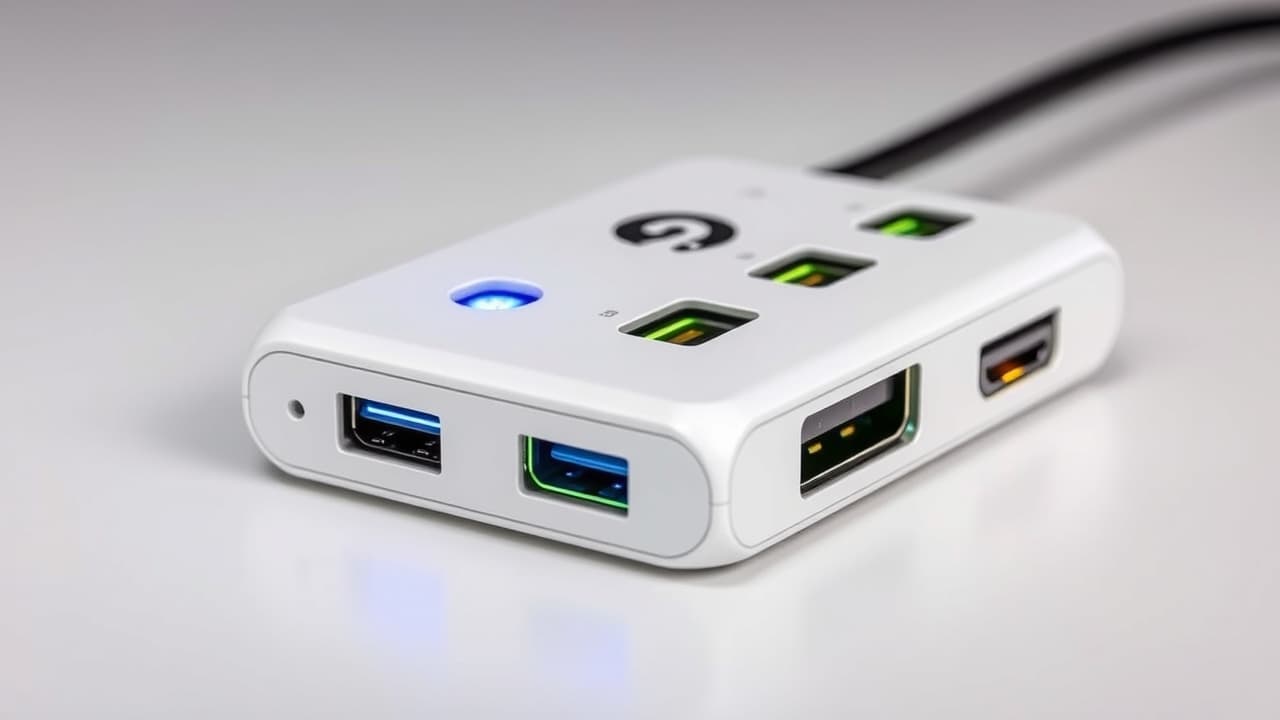
USB-C hubs come in various types, each designed for different usage scenarios and offering distinct capabilities. Understanding these classifications helps you choose the right tool for your specific needs, whether you prioritize portability, extensive connectivity, or maximum performance from your hub.
Simple USB-C Hubs/Dongles: These are compact and cost-effective, ideal for basic expansion needs like adding a few USB-A ports or an HDMI output. They are highly portable, perfect for travelers or those needing minimal extra connections. However, they may lack sufficient ports or power for complex setups, limiting their utility as a primary connectivity solution.
USB-C Docking Stations: These offer a more extensive range of ports, often include higher power delivery, and support multi-monitor setups. They are suitable for robust desktop setups, providing a balance of features and cost. They are generally larger and less portable than simple hubs.
Thunderbolt Docks: Representing the pinnacle of connectivity, Thunderbolt docks offer the highest bandwidth (up to 40Gbps+), extensive ports, and robust multi-monitor support. They are ideal for demanding users, complex setups, external GPUs, and high-speed storage. However, they are the most expensive option and less portable, making them a specialized type of hub.
Design and Portability

The physical attributes of a USB-C hub, including its size, weight, aesthetic, and cable design, significantly impact its usability, especially for users on the go. A well-designed hub enhances convenience and complements your workspace.
Compact and lightweight: For frequent travelers or dynamic work environments, a compact and lightweight design (under 250g) is ideal. This ensures the hub is easy to carry without adding bulk to your bag, making it a perfect travel companion.
Cable length and type: An appropriate cable length (e.g., 10-20 inches for flexibility, or longer for specific desktop setups) is crucial. Integrated cables offer convenience but limit placement if too short or if the cable gets damaged. Detachable cables provide more flexibility and allow for easy replacement. Short, non-detachable cables can cause connectivity issues and limit desk arrangement options, leading to a cluttered workspace.
Aesthetics and port placement: A sleek metal enclosure with thoughtful port placement and spacing enhances aesthetics and ensures convenient access to all connections without clutter. Poor port placement can hinder efficient connectivity, making the hub cumbersome to use.
Future-Proofing Your Investment

In a rapidly evolving technological landscape, investing in a USB-C hub that can adapt to future advancements is a smart move. Future-proofing ensures your hub remains relevant and compatible with new devices and standards, saving you from frequent replacements and additional costs.
Emerging standards: Look for hubs that support USB4 or Thunderbolt 4/5, and Extended Power Range (EPR) up to 240W. These technologies offer higher data transfer speeds and power delivery capabilities, ensuring compatibility with upcoming high-performance devices and high-power charging needs. This provides long-term value and avoids rapid obsolescence, ensuring your hub remains useful for years.
Versatile port selection: Opting for a hub with a variety of ports, including USB-A, HDMI, Ethernet, SD card slots, and USB-C data ports, provides flexibility for current and future device connections. This adaptability helps the hub accommodate evolving peripheral needs without requiring additional purchases.
Tradeoffs: Hubs with future-proof technologies are often more expensive than those with older standards. While waiting for future improvements might mean delaying an immediate solution, a strategic investment can prevent greater costs down the line, making your initial purchase more economical in the long run.
Warranty & Support
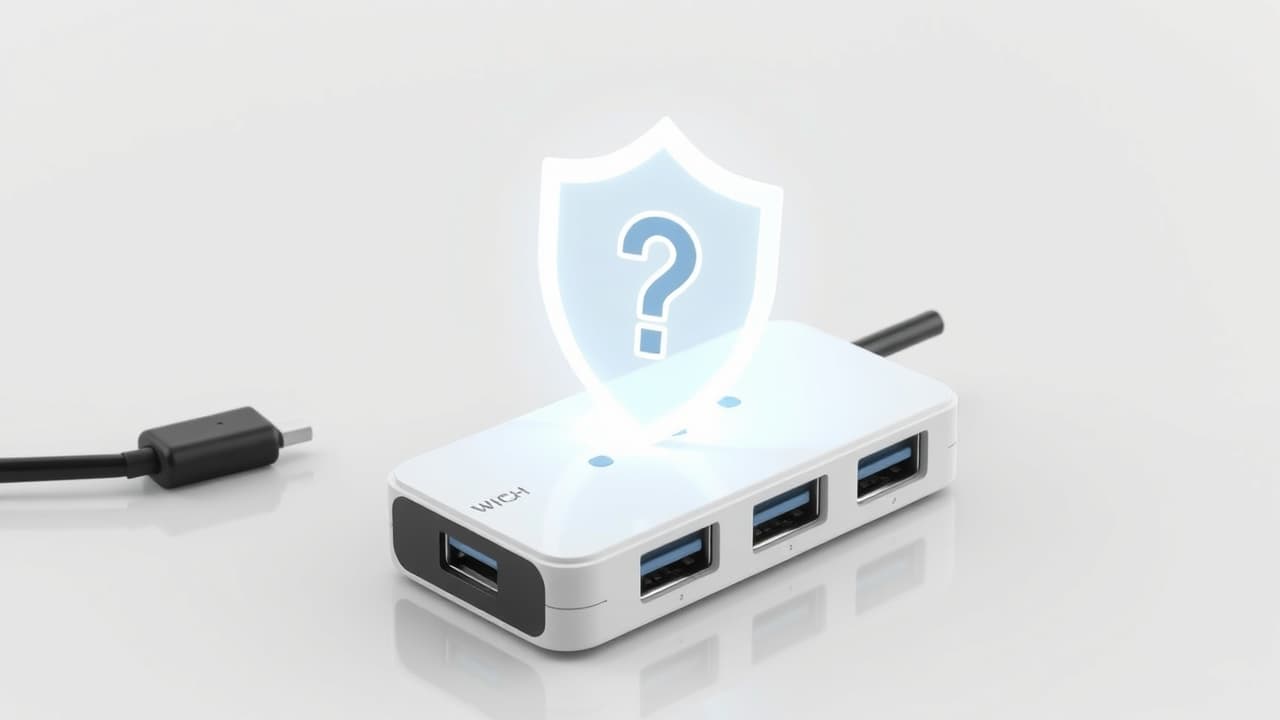
The length of the product warranty and the quality of customer support are important considerations for any electronic device, including a USB-C hub. These factors contribute to your peace of mind and protect your investment against potential defects or early failures, enhancing your overall satisfaction and trust in the brand.
Warranty length: A two-year warranty with responsive customer service offers extended protection and reliable assistance, building customer confidence. Extended warranties further demonstrate a manufacturer's confidence in the product's quality and longevity, providing greater peace of mind for your hub.
Customer support: Responsive and helpful customer support is invaluable when issues arise. Slow or email-based support can be frustrating and lead to prolonged resolution times. Reputable brands often offer comprehensive warranties and readily available support, reflecting their commitment to quality.
Tradeoffs: Reputable brands offering comprehensive warranties and rigorous testing often have higher prices due to their investment in quality and support. Opting for a cheaper hub with a short or absent warranty leaves you vulnerable to product failures without recourse, potentially leading to additional costs down the line.
How to Choose the Ideal USB-C Hub for Your Setup
Selecting the right USB-C hub is crucial for expanding your laptop's capabilities and streamlining your workspace. With modern laptops often featuring limited ports, a high-quality USB-C hub acts as a central connectivity solution, allowing you to connect multiple peripherals, external displays, and maintain power. The key is to match the hub's features to your specific workflow and needs, ensuring it enhances your productivity without creating new bottlenecks.
To make an informed decision, consider your primary use case: are you a professional needing maximum data transfer speed and multi-monitor support, or an on-the-go user prioritizing portability and essential connections? Evaluating factors like port configuration, video output capabilities, and power delivery will help you navigate the diverse market of USB-C hubs and find a durable, compatible device that offers long-term value.
Ultimate Performance & Future-Ready
This category is for professionals, content creators, and power users who demand the absolute highest data transfer speed, robust power delivery, and advanced capabilities to future-proof their setup. If you work with large files, external GPUs, or high-speed storage, and are willing to invest in cutting-edge technology, this is your ideal choice.
Critical Factors: Data Transfer Speed (Thunderbolt 5/USB4), Power Delivery (100W+), Future-Proofing (emerging standards).
Desired Options: Thunderbolt 5 (40-120Gbps), 90W+ host charging, support for high-resolution displays (via adapters if needed).
Recommended Option
CalDigit Element 5 Hub
The CalDigit Element 5 Hub is designed for users who need unparalleled speed and robust power delivery. Its Thunderbolt 5 technology ensures your setup is ready for the next generation of high-performance devices, making it an excellent investment for long-term value, especially for demanding workflows on compatible Windows PCs.
Technology: Thunderbolt 5 for cutting-edge performance.
Max Data Transfer Rate: Up to 120Gb/s, supporting SSD performance up to 6,200MB/s.
Host Charging: Up to 90W to your laptop, with 15W on downstream Thunderbolt 5 ports.
Port Configuration: 9 ports including 4x Thunderbolt 5, 2x USB-C (10Gb/s), and 3x USB-A (10Gb/s).
Display Support (Windows): Up to three external extended displays, capable of 8K@60Hz for two monitors (requires adapters).
Extensive Desktop Connectivity
If your primary need is a comprehensive workstation setup with a wide array of ports, reliable multi-monitor support, and stable power delivery for a fixed desk, this category is for you. These USB-C hubs transform a single laptop port into a powerful docking station, minimizing cable clutter and maximizing your desktop real estate.
Critical Factors: Port Configuration (diverse, 9+ ports including Ethernet and card readers), Video Output (dual 4K@60Hz), Power Delivery (85W+), Device Compatibility.
Desired Options: Multiple HDMI/DisplayPort outputs, Gigabit Ethernet, SD/microSD card slots, several 10Gbps USB ports.
Recommended Options
Baseus Baseus Spacemate 11-in-1 Docking Station
This docking station is a powerhouse for Windows users seeking extensive connectivity and multi-display support. Its upright design saves desk space while offering a vast array of ports for complex professional setups, ensuring all your peripherals are connected and powered.
Total Ports: 11, including 2x HDMI 2.0, 2x DisplayPort 1.4, multiple USB-A/C data, Gigabit Ethernet, and 3.5mm audio.
Max Display Resolution: Dual 4K@60Hz per monitor (Windows), Triple 4K@30Hz (Windows).
Laptop Charging Output: Up to 85W via 100W PD input.
Data Transfer Speed: 10Gbps via USB 3.2 Gen 2 ports.
Design: Upright vertical aluminum finish with a stable magnetic base.
Baseus Dual Monitor 10-in-1 Docking Station
This Baseus hub offers exceptional dual 4K display support and high-speed data transfer, making it ideal for users who need a robust and versatile USB-C hub for productivity and media consumption. Its comprehensive port configuration includes essential card readers and Ethernet.
Total Ports: 10, including 2x HDMI (v2.1 & v2.0), USB-C/A 10Gbps data, Gigabit Ethernet, SD/TF card readers.
Max Display Resolution: Single 4K@120Hz, Dual 4K@60Hz simultaneously.
Power Delivery: Up to 100W input, 85W pass-through to host laptop.
Data Transfer Speed: 10Gbps via USB 3.2 Gen 2 ports.
Design: Sleek, ultra-slim metal chassis for durability and heat dissipation.
Plugable USB-C 9-in-1 Hub (USBC-9IN1E)
The Plugable 9-in-1 hub stands out for its robust power delivery and high-speed UHS-II card readers, making it an excellent choice for users who need reliable power and fast media transfers in a desktop setup. Its broad device compatibility ensures seamless integration.
Total Ports: 9, including 1x HDMI 2.0, 1x 10Gbps USB-C, 2x 10Gbps USB-A, 1x USB 2.0, SD/MicroSD (UHS-II), Gigabit Ethernet.
Power Delivery: 140W pass-through charging (125W to host) via PD 3.1 EPR.
Video Output: 1x 4K@60Hz HDMI with HDR support.
Card Reader Speed: Up to 312MB/s with UHS-II SD/MicroSD.
Compatibility: Windows 10/11, ChromeOS 100+, macOS 11+ (including M1/M2/M3 MacBooks).
Balanced Everyday Use
This category is for general users seeking a reliable, versatile USB-C hub with essential ports, good performance, and a reasonable price point. If you need to connect common peripherals, an external monitor, and charge your laptop without requiring the absolute highest speeds or most niche ports, these options provide excellent value for daily tasks.
Critical Factors: Port Configuration (HDMI, USB-A/C, Ethernet, card readers), Data Transfer Speed (5-10Gbps), Power Delivery (85W+), Device Compatibility.
Desired Options: 7-9 essential ports, 4K@60Hz HDMI, 10Gbps USB data ports, Gigabit Ethernet, SD/microSD slots.
Recommended Options
Anker 555 USB-C Hub (8-in-1)
The Anker 555 offers a comprehensive 8-in-1 solution with impressive data transfer speed and reliable 4K@60Hz video output. It's a versatile choice for everyday use, providing essential ports like Ethernet and card readers in a premium, durable build, making it a dependable USB-C hub for most users.
Total Ports: 8, including 1x HDMI, 1x USB-C PD, 1x USB-C data (10Gbps), 2x USB-A data (10Gbps), Gigabit Ethernet, SD/MicroSD card readers.
Video Output: 4K@60Hz HDMI (with DP 1.4 laptop).
Power Delivery: 100W input, 85W output to host laptop.
Data Transfer Speed: 10Gbps via USB 3.2 ports.
Design: Premium metallic build, compact, and lightweight.
UGREEN Revodok Pro 109, 9 in 1 USB C Hub
The UGREEN Revodok Pro 109 offers a strong balance of port configuration and performance for daily use. With 10Gbps data speeds, 4K@60Hz HDMI, and a Gigabit Ethernet port, it’s a versatile USB-C hub that handles most connectivity needs efficiently, all within a premium aluminum casing.
Total Ports: 9, including 1x HDMI 2.0, 1x USB-C 3.2 Gen 2 (10Gbps data), 1x USB-A 3.2 Gen 2 (10Gbps), 2x USB-A 3.0 (5Gbps), Gigabit Ethernet, SD/TF card readers.
Video Output: 4K@60Hz HDMI.
Power Delivery: 100W input, 90W output to host.
Data Transfer Speed: Up to 10Gbps.
Design: Compact aluminum alloy casing with a 10-inch integrated cable.
Portable & Essential Travel
For users constantly on the move, a compact and lightweight USB-C hub with fundamental ports is essential. This category focuses on design and portability, offering core connectivity like HDMI, USB-A, and card readers without adding bulk to your travel bag. These hubs are perfect for presentations, quick data transfers, and connecting essential peripherals wherever you are.
Critical Factors: Design and Portability (compact, lightweight), Port Configuration (essential 6-7 ports), Power Delivery (sufficient for laptop).
Desired Options: Under 150g, sleek aluminum build, integrated cable, HDMI, multiple USB-A, SD/microSD card readers.
Recommended Options
Anker 341 USB-C Hub (7-in-1)
The Anker 341 is an excellent choice for travelers and those needing a compact, versatile USB-C hub. It provides essential port configuration including HDMI, USB data ports, and card readers, all in a durable, travel-friendly design. Its plug-and-play nature ensures ease of use across various devices.
Total Ports: 7, including 1x 4K HDMI, 1x USB-C PD, 1x USB-C data (5Gbps), 2x USB-A data (5Gbps), microSD/SD card readers.
Video Output: 4K@30Hz HDMI (supports 1080p@144Hz).
Power Delivery: Up to 100W pass-through charging (85W to laptop).
Design: Compact, durable aluminum design, weighing 99.8g.
Compatibility: MacBook Air/Pro, XPS, Windows 10, macOS, and more.
UGREEN Revodok Pro 106, USB C Hub 6 in 1
The UGREEN Revodok Pro 106 is a sleek and highly portable USB-C hub designed for essential connectivity on the go. Its compact design and portability make it easy to carry, while offering high-speed data transfer and reliable 4K@60Hz video output for presentations or external displays.
Total Ports: 6, including 1x 4K@60Hz HDMI, 2x USB-C 3.2 Gen 2 (10Gbps data), 2x USB-A 3.2 Gen 2 (10Gbps), 1x USB-C PD.
Video Output: 4K@60Hz HDMI.
Power Delivery: Max 100W pass-through charging (up to 85W to device).
Data Transfer Speed: Up to 10Gbps via USB 3.2 Gen 2 ports.
Design: Compact aluminum alloy casing, weighing 180g.
